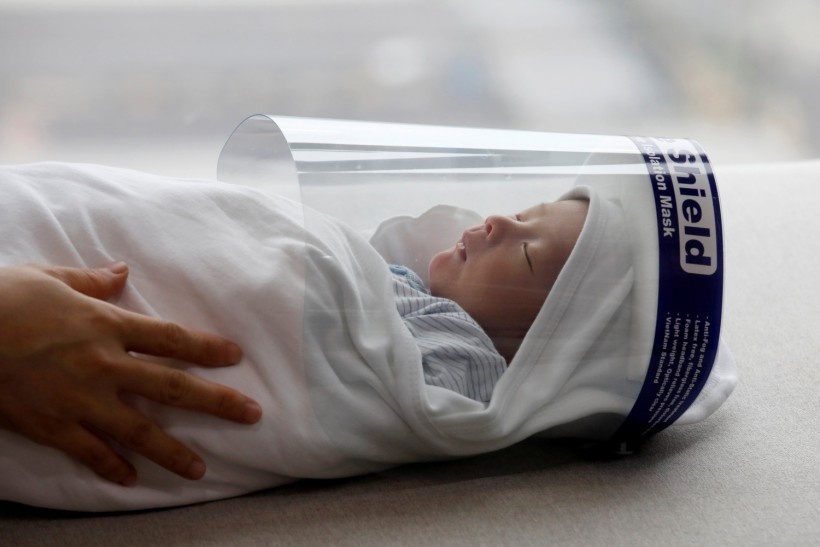Personal protective equipment (PPE), including N95 masks and gloves, continue to be scarce across the healthcare industry as hospital workers use it to shield themselves from the novel coronavirus.
And some hospitals are now turning to ultraviolet radiation to help disinfect available medical equipment to prolong their use.

Newborn baby Phuc An, wearing a protective face shield, is seen before leaving home for his vaccination, during the coronavirus disease (COVID-19) outbreak in Hanoi, Vietnam April 13, 2020. Phuc An was born at Vinmec hospital in Hanoi on April 1, when the Southeast Asian country started strict restrictions on movement to contain the spread of the coronavirus pandemic that has infected more than 3 million people worldwide. The three-week lockdown put most of the social and economic activities throughout the country on hold, but life must go on, and giving birth couldn't be delayed. Picture taken April 13, 2020.
ALSO READ: COVID-19 Update: Japanese Company Claims UV Light Robot Can Destroy Coronavirus in 2 Minutes
Healthcare workers turn to UV radiation to disinfect PPEs in Coronavirus battle
The shortage of PPEs has led a team at Nebraska Medicine to develop a process that allows for the decontamination and reuse of N95 masks. The procedure entails delivering high doses of "ultraviolet germicidal irradiation" (UVGI) to the used masks.
"The UVGI exposure we have chosen exceeds, by at least several folds, the amount of exposure needed to inactivate SARS-CoV-2 and provides a wide margin of safety for surface decontamination," the team's report noted.
When worn correctly, these filtering facepiece respirators (FFR) are designed to protect the wearer by removing at least 95%t of particles from inhaled air, according to the Centers for Disease Control and Prevention (CDC).
An FFR has to seal to the wearer's face, without allowing air to pass through gaps between the respirator and the wearer's skin. Surgical masks, on the other hand, are not designed to protect the wearer from airborne hazards. These devices limit the spread of infectious particles expelled by the wearer.
Nebraska Medicine plans to disinfect and reuse the N95 FFRs "multiple times until respirator suit is impacted," the report noted.
"Our program initially involved the units with high N95 FFR use, such as the emergency department and our COVID-19 ward, but we plan to rapidly expand to ambulatory settings," the research team said.
N95 masks are also being reused at Saint Louis University Hospital in St. Louis. After being exposed to UV light for 10 minutes, the mask can be used for up to five more shifts. The crew is capable of sanitizing as much as 1,600 N95 masks per day.
"We believe a variety of UV light sources could be used similarly, including UV-equipped biosafety or sterilization cabinets or other UV disinfection systems," the report wrote. Nebraska Medicine's report added that the same method can be applied to a variety of other critical items, such as procedure masks.
Level of UV exposure needed
Dr. Jeremy Rossman of Kent University in the United Kingdom told AccuWeather that UV light is powerful at destroying the genome of viruses and sterilizing surfaces in laboratories.
However, specialists need to take proper precautions and ensure they are accurately sterilizing the personal protective equipment.
"[The general public doesn't know] how much UV-C light [they] are getting from this, and [they have] no idea how to use it to get the precise dose," said Bob Karlicek Jr. of the Center for Lighting Enabled Systems and Applications at Rensselaer Polytechnic Institute.
To disinfect items thoroughly, he said one must need the right amount of UV-C light. Nebraska Medicine noted in materials needed in disinfecting and local rules should be considered before adopting any process and which may impact [its effectivity]."
ALSO READ: COVID-19 Update: Summer, UV Lights Won't Likely Save People From Coronavirus - Experts Say








